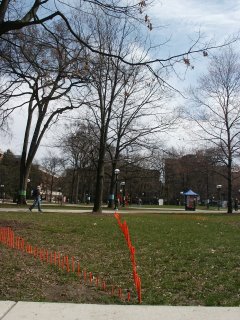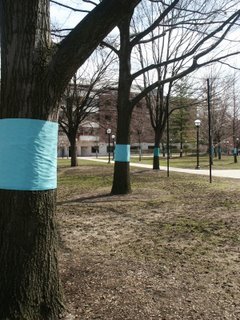Anyway, before the Campfire, there was some additional log-splitting that needed doing:

... and I really like that new Fiskars splitting axe that I purchased at the start of the month. It made short work of those ash logs. It's sharp, keeps an great edge, has a perfect wedge for splitting, is well balanced, and is not stupidly heavy.
Prep work also included moving the row boats to a different location:

One can't have people taking pleasure rides in the middle of the night, right? And, also, with all the boats there, it makes it difficult to safely run the wader races:

Happily, we were able to run the wader race early enough in the evening that we didn't have to do the log-sawing competition in the dark:

... looking back through my photos, I think that this was the first time in a number of years that the log sawing was done during daylight hours. Usually, it has been illuminated by the headlamps and flashlights of all the cheering SNREds.
It was a great honor of mine to also take the alumni of the class of 1962 on a tour of the forest; a place that they had come many times 50 years previous, when they were forestry students. They asked many interesting questions, were heartened to know that the property was still being used for research and teaching, were a little discouraged about the consequences of the lack of serious investment in the property, and generally curious about what changes I knew of that had happened between the time of their graduation and last Friday. What was meant to be a 40 minute tour of the lake trail turned into a discussion that was more than an hour long about many different aspects of the history and ecology of the forest. Hopefully, SNRE's alumni relations will help in trying to get these former students to recount some of their memories of the forest.








